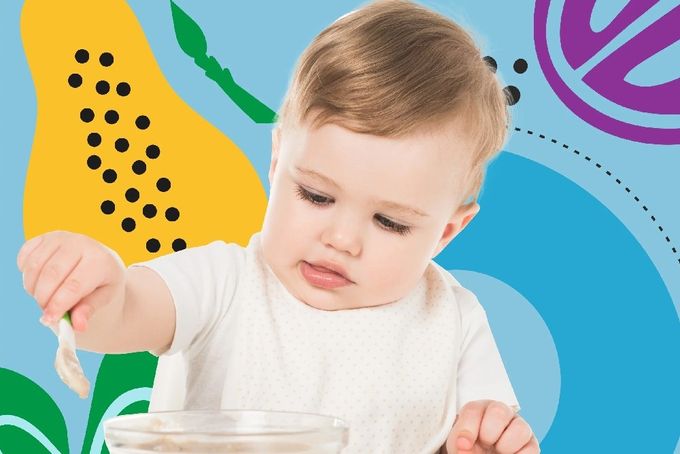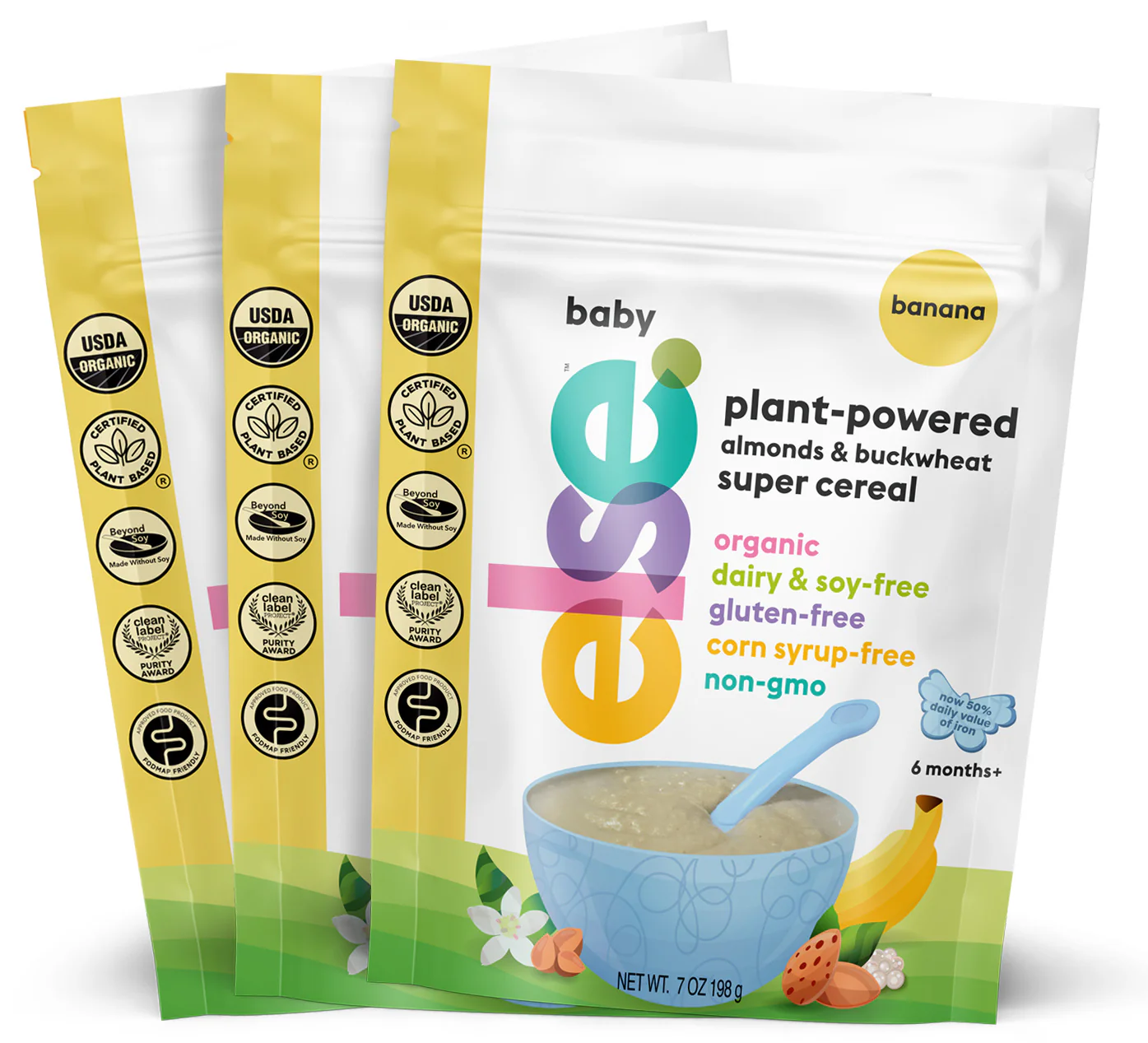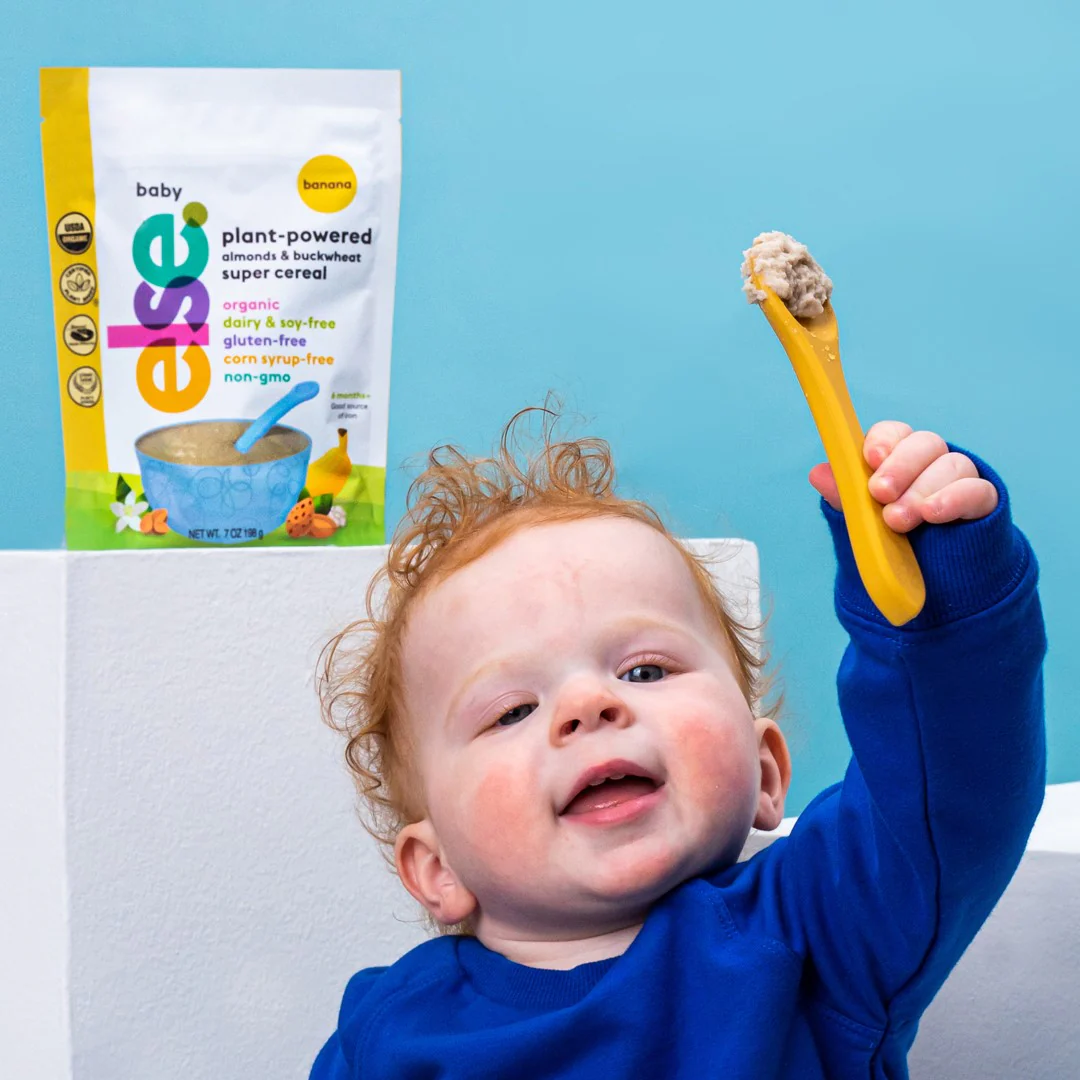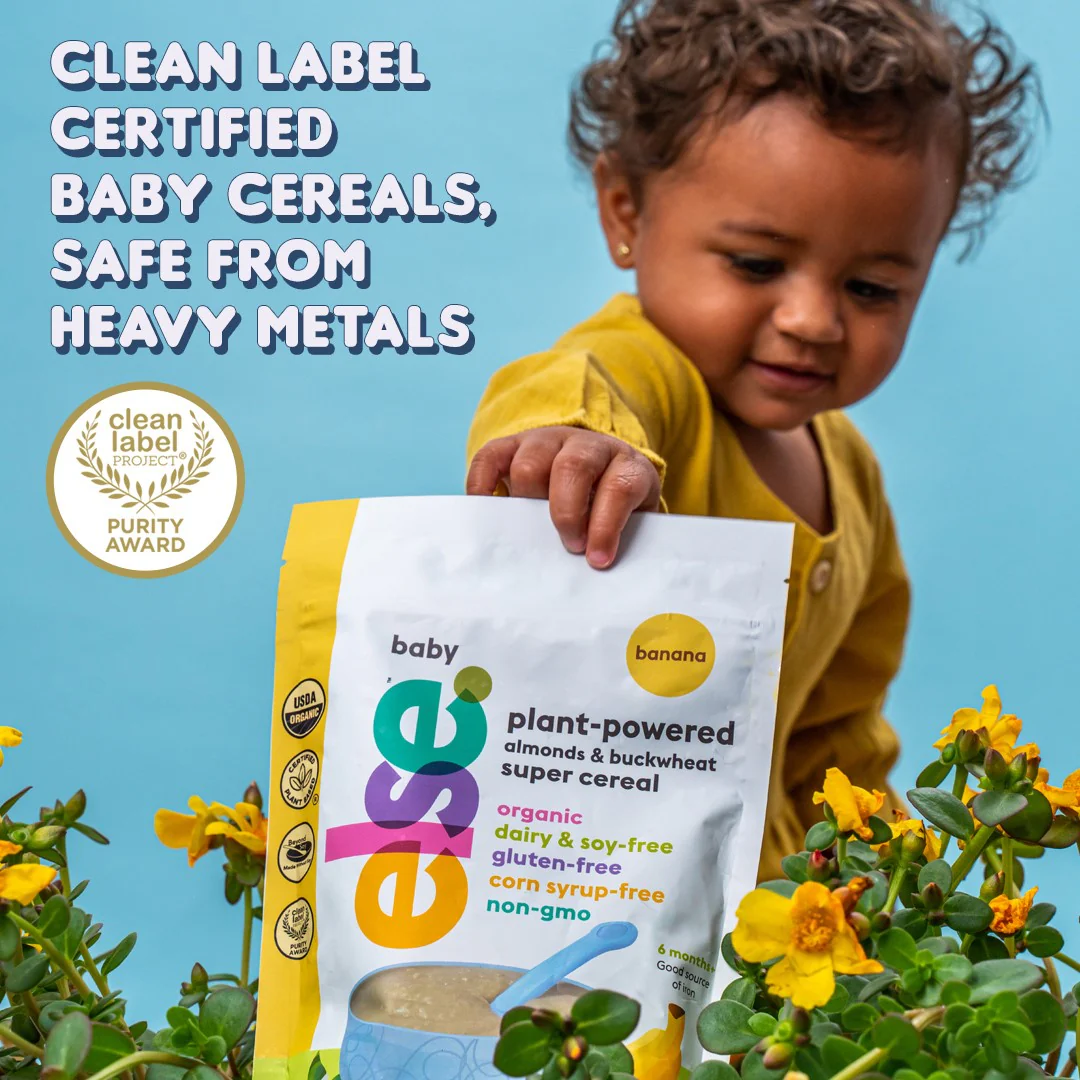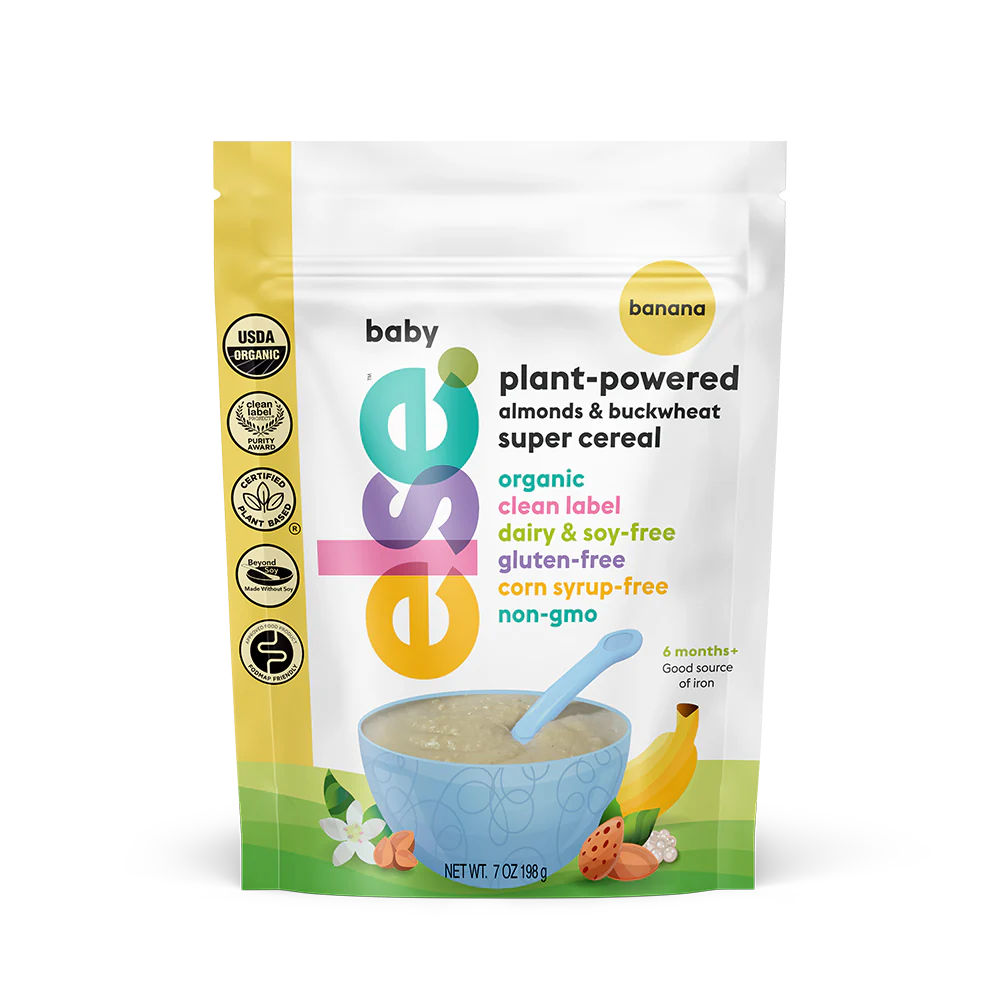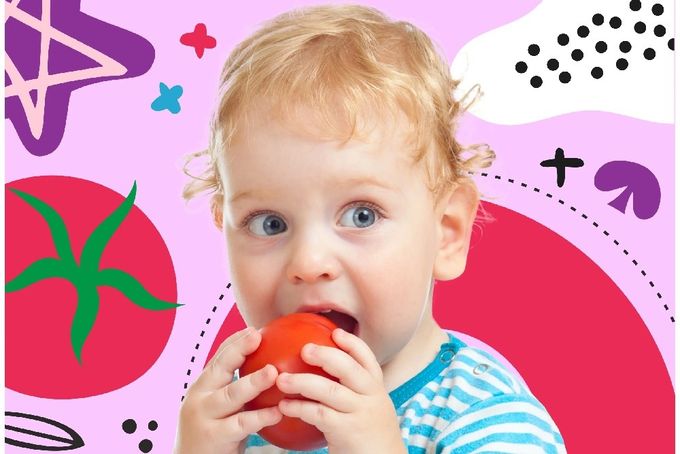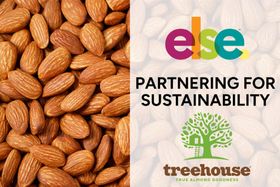Offering Whole Foods for Babies and Toddlers: Why, What, and How?
Whole foods in baby's and toddler's diet are very important. Find out how to incorporate them with balance in their diet regime.
Updated May 15, 2024

When infants reach about 6 months of age, their energy and nutrient needs begin to exceed what can be provided through breast milk alone. At this stage, they require additional foods (also known as complementary foods or complementary nutrition) to adequately meet their needs.
Has your child reached this stage? Are they quickly approaching the 6-month milestone? If so, you may be wondering what kind of foods to feed them. What do they need to maintain their health and support continuous weight gain and development?
Most parents agree that they should be offering an array of whole foods, versus ultra-processed foods, for growing babies and toddlers. At the same time, though, there’s a lot of debate about the best kinds of whole foods for children in these age groups.
If you’re unsure about where to start when it comes to incorporating solid whole foods, keep reading. Everything you need to know about the best whole foods for babies and the best whole foods for toddlers is explained below.
Why Do Babies and Toddlers Need Whole Foods?
It’s never too early to start thinking about your child’s nutritional needs. There are lots of reasons to make whole foods a staple in your baby or toddler’s diet, including the following:
- Proper physical development: By introducing whole foods like fruit, vegetables, and whole grains into your child’s diet, you’re helping to support proper physical development. These foods offer both macronutrients (proteins, fats, and carbohydrates) and micronutrients (vitamins and minerals) that your baby or toddler needs for healthy bones and muscles, among other physiological functions.
- Improved cognitive health: A whole foods-based diet is crucial for babies’ and toddlers’ cognitive health, too. For proper brain development, kids need to consume adequate calories and a good mix of nutrients each day. Without appropriate nutrient consumption as babies and toddlers, children may also be more prone to mental health challenges like depression when they get older.
- Stabilized energy: When kids consume mainly whole foods, rather than ultra-processed foods that are high in added sugar and low in beneficial nutrients, they experience more stable energy levels throughout the day. They’re less likely to experience drastic sugar spikes and crashes, as well as the issues that tend to accompany them, such as mood swings, dizziness, and fatigue.
- Healthy weight maintenance: If your child is fed a whole foods-based diet from an early age, their chances of struggling with weight issues, like obesity, are reduced. Research shows that there’s a positive correlation between weight gain and processed food in children. By providing kids mainly with healthy, whole, nutrient-dense foods, you can reduce their chances of rapid and unintentional weight gain, as well as the health issues that often come with it.
- Easier mealtimes: When your child’s diet is mainly composed of whole foods, they’ll likely have more positive associations with those foods as they get older. If they are introduced to a variety of foods from a young age, they’ll likely have an easier time eating whole, nutrient-dense foods, and you won’t have to fight them to eat a bite of something green at every meal.
What Are the Best Whole Foods for Babies?
When your baby reaches the 6-month milestone, they can likely start consuming whole foods along with breastmilk or formula.
The specific foods that are okay to offer vary depending on age. A 6-month old baby may not be able to handle certain foods that are appropriate for an 11-month old, for example. It’s important that your baby shows signs of feeding readiness, like being able to hold their head up well, before starting to offer whole foods.
Here are some ideas of healthy foods to begin introducing into your child’s diet, based on their age:
6-8 Months
For children aged 6-8 months, the best whole foods are those that are soft and easy to eat without chewing. The following are some of the most popular options:
Oatmeal
Oatmeal is one of the most popular grains introduced to babies and toddlers. It’s easy to digest and has a mild flavor, and it’s also a good source of carbohydrates, fiber, and other nutrients, such as iron and magnesium.
Rice
Rice is another example of a good whole food to introduce to babies. Like oatmeal, it has a mild flavor and is easy to digest. It contains plenty of carbohydrates, as well as a bit of vitamin B6 and magnesium.
Soft, Cooked Fruit
When introducing fruit to babies, make sure it’s cooked and softened so you don’t have to worry about choking.
Cooked and cooled apples, pears, and peaches are all great options. You can also offer soft raw fruits, such as watermelon cut into very small pieces.
Avoid acidic fruits for now, as they may upset your baby’s stomach.
Soft, Cooked Vegetables
On a similar note, vegetables should also be cooked and softened to avoid choking and allow for easy eating.
Stick to non-acidic vegetables such as cooked green beans, peas, and cooked, mashed sweet potatoes. These are all tasty, nutrient-dense whole foods that will help your baby to start developing a taste for vegetables.
Soft, Cooked Meat/Fish
If you want your child to eat animal products, soft, cooked meat and fish are good whole foods to introduce at this stage, too.
As long as they’re well-cooked, these foods can provide a good source of protein for your baby. They also contain significant amounts of micronutrients, such as vitamin B12, iron, and zinc.
Tofu
For a plant-based protein source, try introducing your baby to small, mashed pieces of tofu, which are rich in protein as well as calcium and iron. You can even puree tofu if you want to make it extra soft and easier to eat. As your baby gets a little older, you can offer tofu cut into strips or even cut into cubes and roasted.
» Discover best vegan food picks
Yogurt
Yogurt is another good whole food that provides your baby with calcium, vitamin D, and a bit of protein. There are plenty of dairy and non-dairy yogurts available that have been fortified with nutrients and also contain probiotics.
Look for unsweetened yogurts if possible, then add a little bit of fruit to make them sweeter. This allows your baby to enjoy a sweet treat that isn’t loaded with sugar or additives.
Mild Cheeses
At 6-8 months, it’s fine for babies to eat mild cheeses, such as cheddar cheese, which is a good source of calcium and vitamin A. Cut it up into very small pieces before offering it to them to ensure they don’t choke.
8-10 Months
When babies reach the age of 8-10 months, parents and caregivers can start incorporating more whole foods into their diet. For more texture and nutritional variety, try introducing the following:
Pasta
If you want to mix up the whole grains you’re offering your baby, at around 8-10 months, try introducing some pasta into the mix. Aim for half and half when it comes to whole and refined grains, as many babies have sensitive digestive tracts and too much fiber can actually promote constipation in some children.
Make sure the pasta is cooked thoroughly so that it’s soft, then let it cool and place some on their plate. Mix it with some cooked vegetables and a bit of cheese for extra flavor.
Raw, Ripe Fruit
Bring more fruit into your baby’s diet at this age, too. Try mixing in more raw, ripe fruit (so that you can be sure it’s soft) alongside cooked options. Consider mashed blueberries or strawberries, for example, or a ripe banana.
Soft Vegetables
Introduce some additional vegetables at 8-10 months as well. Look for soft, raw vegetables or continue bringing in new cooked vegetables like broccoli or cooked squash. Keep pieces small when offering raw vegetables to minimize choking and avoid anything too crunchy, like raw carrots.
Eggs
If you’re looking for another protein source to add to your baby’s diet, try serving them some cooked eggs. This is a great way to provide protein, fat, and nutrients like vitamin D.
Avocado
Avocado is a great source of fat and fiber, as well as folate, iron, and vitamin C. Mash up some avocado or cut it into thin strips to feed to your baby. You can serve it alone or mixed with vegetables, fruit, or yogurt.
» Learn more about how to include healthy fats in your little one's diet
Varied Cheeses
Try introducing different types of mild cheese into your baby’s diet at this age, too. For example, you can give them a bit of Swiss or provolone cheese to mix things up.
10-12 Months
During the 10-12 month stage, parents can be a bit more adventurous with the whole foods they offer their babies. After all, they’re almost to the toddler stage. Here are some examples of whole foods to introduce around this age:
Citrus Fruits
At 10-12 months, your baby may be able to handle small amounts of citrus fruits like oranges and grapefruits, which are loaded with vitamin C and other antioxidants. You can simply remove the peel, any strings and thin skin, and offer in slices. Offer a tiny serving to start, then monitor their response to see if they experience an upset stomach or reflux.
Diced Vegetables
Mix in more raw, diced vegetables at this age, too. Keep pieces small, but feel free to add different types to their meals to see what kinds they like best. Some ideas include tomatoes, peeled cucumber, and grated carrots.
What Are the Best Whole Foods for Toddlers?
When your child reaches the toddler stage (ages 1-3 years), they’ll be ready for a wider range of whole foods.
Are you unsure of where to start when it comes to introducing more foods into their diet? Here are some nutritious and tasty options to consider:
Squash
If you’re looking to vary the types of vegetables your toddler eats, try bringing more squash into the mix. Acorn squash, spaghetti squash, delicata squash — the options are practically endless. Squashes are full of nutrients like vitamin A, B vitamins, and fiber, too.
Rice Cakes/Crackers
Rice cakes and crackers are a good example of a simple carbohydrate you can add to your toddler’s diet. They make a great vehicle for fruit, vegetables, cheeses, and other whole foods. Just be sure to look for rice crackers and cakes that are only made with whole foods (many are made with just rice and salt, for example).
Beans
Beans are a good whole food source of protein, carbohydrates, and fiber, as well as magnesium, iron, and potassium. Now is the perfect time to start including them in your toddler’s diet. Try mixing up their meals with different types (black beans, pinto beans, red beans, navy beans, etc.).
Black-Eyed Peas
Like beans, black-eyed peas are a legume, andare a good source of protein, carbohydrates, and fiber, along with nutrients like manganese, folate, and vitamin A. If you’re looking to add more variety to your toddler’s whole foods diet, try including them in the meal rotation.
Nut Butters
For parents who want to introduce something a bit sweet that isn’t loaded with sugar, nut butter is a perfectly toddler-friendly whole food (make sure they’re only made using nuts and salt with no added sugar or preservatives).
Peanut butter, almond butter, and cashew butter are all good choices that contain protein, fat, and micronutrients like calcium, and magnesium. Serve them on rice crackers or with fruit like bananas. If your household avoids nuts, sunflower seed butter is a nut-free option with similar qualities.
Celery
Celery makes a great vehicle for nut butter, but your toddler can also enjoy it diced up on its own or served alongside other vegetables. It’s a good low-calorie vegetable that contains a bit of fiber and calcium, along with beneficial B vitamins. You can also check out Else Nutrition's amazing Plant-Based Formula for Toddlers! Packed with fiber and calcium, it's perfect with celery. Give it a try!
Unsweetened Coconut
Unsweetened coconut is fun for toddlers to enjoy mixed in with yogurt or sprinkled on top of fruit. It also contains fiber, healthy fats, and micronutrients like potassium and iron. Look for sugar-free options to add texture and a unique flavor to their meals and snacks.
Cottage Cheese
For more whole food protein sources that aren’t meat or fish (which some toddlers might not enjoy eating), cottage cheese is a great option. It’s an excellent protein source and is easy to mix with other foods, such as fruit, vegetables, or nut butter depending on whether your toddler wants a sweet or savory snack.
Kale
The earlier you start introducing green foods into your child’s diet, the better. This includes vegetables like kale, which many children (as well as the majority of adults) might turn their noses up at first. Try serving it along with other vegetables so your toddler can enjoy a healthy dose of vitamins A, K, and C. For instance, if your child likes spinach or another leafy green, try introducing kale by mixing it with an already accepted green.
» Explore delicious food ideas for your toddler
Mushrooms
Mushrooms are a great source of B vitamins and micronutrients like selenium. They also contain a little bit of plant-based protein.
Like kale, if you introduce mushrooms into your toddler’s diet early, they’ll be more likely to enjoy them when they get older. Try serving raw mushrooms alongside other vegetables, or mix cooked mushrooms in with rice, pasta, or meat.
Polenta
Polenta is made from corn and is a good whole food source of carbohydrates, fiber, magnesium, and vitamin B6. If you’re looking to mix up your toddler’s grains, try cooking up some polenta as an alternative to rice, oatmeal, and pasta.
Quinoa
Quinoa is another excellent whole food carbohydrate and fiber source that also contains a lot of plant-based protein. It has a mild taste that’s great for picky toddlers and makes a great base for hot and cold dishes.
Tofu
Tofu is a great whole food for toddlers as well as babies. It contains lots of plant-based protein and is a complete protein source, meaning it has all the essential amino acids your toddler needs for healthy muscle tissue. Look for calcium-set tofu for this added nutrition benefit.
How to Choose Whole Foods for Babies and Toddlers
It’s totally understandable if you’re feeling overwhelmed trying to select the right whole foods for your baby or toddler. There’s a lot to choose from, after all.
If you don’t know where to start, here are some tips to guide you and help you find the best options for your kiddo:
1. Read Ingredient Lists
When buying packaged foods, always check the ingredient list. Steer clear of options that contain lots of sugar, artificial sweeteners, and other additives. Look for short ingredient lists that contain recognizable whole foods as much as you can.
2. Shop Organic if Possible
When shopping for fruits and vegetables, as well as nuts and grains, look for organic products whenever you can. These options contain fewer pesticides than conventional counterparts, and in some cases, they also contain more of the nutrients your baby or toddler needs.
3. Make Sure They Pass the “Squish” Test
If you’re not sure if you should offer a particular whole food to your baby or toddler, start by checking to see if it passes the “squish” test.
Can you easily squish it between your fingers? If so, it’s probably safe for them to eat.
4. Start Small
Start by introducing just one or two foods at a time. This helps you pinpoint any potential allergies or intolerances. It also makes the process easier if your child isn’t used to eating a lot of whole foods and reduces the likelihood that you’ll overwhelm or frustrate them.
Tips for Incorporating More Whole Foods into Your Child’s Diet
Are you concerned about how your child will respond to having more whole foods in their diet? This can be particularly challenging for toddlers, especially if they’ve already been introduced to highly palatable processed foods.
Tip 1: Mix Foods with Breastmilk or Formula
This tip is especially helpful for babies. Mixing in a bit of breastmilk or formula can make foods like oatmeal, rice, and yogurt more appealing to them, as well as softer and easier to eat.
Tip 2: Start by Switching 1 or 2 Foods
If you’re working to bring more whole foods into your toddler’s diet, you may face some resistance in the beginning. To make the transition easier, start by switching just 1 or 2 foods. For example, offer rice crackers instead of a more processed option, or serve quinoa with cheese mixed in instead of macaroni and cheese from a box.
Tip 3: Give Kids Freedom to Choose
When possible, let your toddler choose which whole foods they eat with their meal. For example, give them a choice between strawberries and blueberries or carrots and celery.
When they have a sense of autonomy and ownership, kids are often more inclined to accept whole foods in their meals. Along with this, try not to express your own feelings around whether your child chooses to eat a food or not. Remaining neutral is best as your child develops their eating confidence.
Tip 4: Be Patient
Remember, it may take time for your toddler to enjoy eating mostly whole foods. Don’t give up, though.
Keep exposing them to different types of whole, nutrient-dense foods. Over time, you’ll be able to identify the ones they enjoy the most. Then, you can build and add more variety from there.
Tip 5: Lead by Example
Make sure you’re eating the kinds of whole foods you want your baby or toddler to eat, too. After all, all of the best whole foods for babies and best whole foods for toddlers are nutritious options for adults as well.
The Best Whole Food Baby Food Recipes
Do you want to start introducing your kids to more whole foods? Are you unsure of how to prepare them so they’ll be enjoyable for your baby?
Here are a few simple whole food baby food recipes to get you started:
Quick Baby Whole Food Recipes
🥑Avocado Puree
Blend half of a ripe avocado with a bit of breastmilk, formula, or water to create a smooth puree. If your baby or toddler doesn’t eat all of this at once, you can store it in the fridge with a bit of lemon juice (if they tolerate citrus) to keep it green.
🥜Whipped Peanut Butter
Quickly stir water a little at a time into a spoonful of creamy, unsweetened peanut butter until it reaches a whipped, yogurt-like consistency. You can do this with other types of nut butter, too.
🍓Strawberry Yogurt Puree
Blend one cup of sliced strawberries until the mixture is smooth. Add a few spoonfuls of the puree to plain yogurt to add sweetness and extra flavor.
Choose the Best Whole Foods for Babies and Toddlers Today
By incorporating the best whole foods for babies and toddlers into your child’s routine, you can set them up for long-term health and optimal physical and cognitive development.
Don’t have time to whip up any of the recipes mentioned above? Need a quick, convenient, yet still healthy, whole food option to share with your little one? If so, Else Nutrition is perfect for you.
Else Nutrition is dedicated to providing your child with clean, nutritious, plant-based products.
Made with a special blend of almonds, buckwheat, and tapioca, Else products are loaded with nutrients. They are perfect for sensitive babies and toddlers, as well as picky eaters and those who need additional supplementation because of intolerances and allergies.
The content and advice provided in this article is for informational purposes only and is not a substitute for medical diagnosis, treatment, advice for specific medical conditions. Always consult a pediatrician to understand the individual needs of your child.





